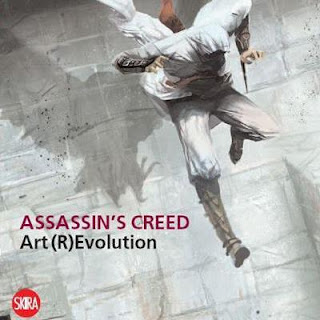[...] Assassin’s Creed is born eager for history, a few years after The End of History, as it was declared at the beginning of the 90’s. The story within Assassin’s Creed is great since its early concepts and the places where it is set are largely UNESCO World Heritage Site. The mother being the Annales School, with its appreciation of The Medieval Imagination; the father Michel Foucault, with his investigations into the relationships between power and knowledge. [...] We should not forget the intellectual vocation of the main characters of Assassin’s Creed, as they have it precisely inscribed in their DNA. Warriors but also writers, a cross between Garcilaso de la Vega and Marcus Aurelius, each of them owner of a rich library. Altaïr is a writer and his codex passes through the hands of Marco Polo and Dante Alighieri (surely Assassins, the latter being the first even to use the word “assassin” in Italian: Inferno, XIX, 50). Ezio Auditore, apart from living in such a jewel of village as Monteriggioni, comes from a family which is fond of architectural innovations (Villa Auditore as a Renaissance prototype above all) and subsidizes restoration of ancient monuments. Ezio surrounded himself with works of art and married a librarian wife, Sofia Sartor, who is none other than the Young Venetian Woman portrayed by Albrecht Dürer in 1505 (and Venice that of Commynes). [...]
[...] Assassin’s Creed nasce affamato di storia dopo che, all’inizio degli anni novanta, era stata decretata proprio la “fine della storia”. La storia di Assassin’s Creed nasce già grande e i luoghi in cui è ambientata sono in buona parte Patrimonio dell'UNESCO. La madre è l’École des Annales con la sua rivalutazione del Medioevo “meraviglioso e quotidiano”; il padre, Michel Foucault, il suo indagare le osmosi fra potere e sapere. [...] E' bene ricordare la vocazione intellettuale dei protagonisti di Assassin’s Creed – sarebbe proprio il caso di dire che ce l’hanno inscritta nel DNA – guerrieri ma anche scrittori, una via di mezzo tra Garcilaso della Vega e Marco Aurelio, ognuno dotato di una ricca biblioteca. Altaïr è scrittore e il suo codice passa fra le mani di Marco Polo e Dante Alighieri (chiaramente Assassini, il secondo poi è fra i primi a usare il termine in italiano: Inferno, XIX, 50). Ezio Auditore, oltre ad abitare in un gioiello di borgo come Monteriggioni, proviene da una famiglia amante delle novità architettoniche (Villa Auditore come prototipo rinascimentale), sovvenziona restauri di monumenti antichi, si circonda di opere d’arte e sposa una libraia, Sofia Sartor, che altri non è che la Giovane veneziana ritratta da Albrecht Dürer nel 1505 (e Venezia è quella di Commynes). [...]
Luca Traini
EVOLUTION.jpg)

Nessun commento:
Posta un commento